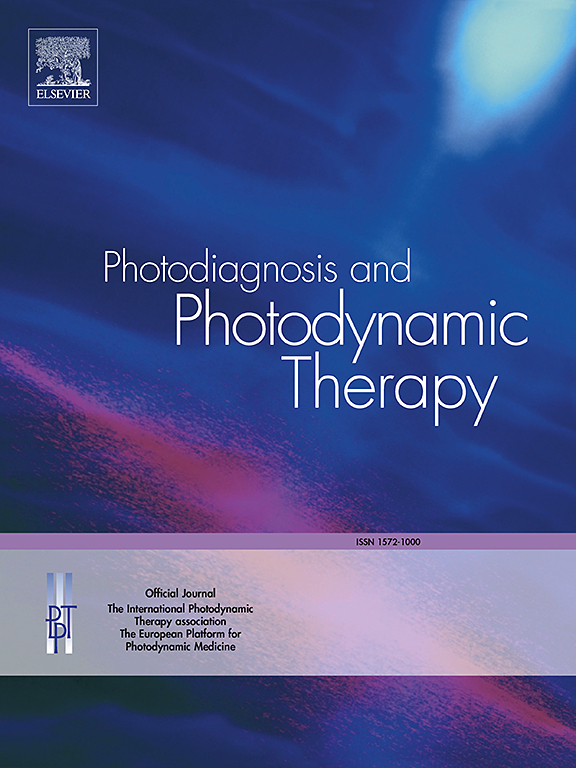Cimetidine (H2 histamine antagonist), Fexofenadine (H1 histamine antagonist), and Zinc sulphate in the treatment of erythropoietic protoporphyria
IF 3.1
3区 医学
Q2 ONCOLOGY
引用次数: 0
Abstract
Background
Erythropoietic protoporphyria (EPP) patients are deficient in the ferrochelatase enzyme which converts protoporphyrin IX (PpIX) into heme, causing PpIX to accumulate in mature erythrocytes and skin. When skin is exposed to visible light, a phototoxic reaction occurs with clinical symptoms of erythema, pain, and edema. Cimetidine (H2 histamine antagonist) may inhibit the δ-aminolevulinic acid synthase, reducing the build-up of PpIX. Fexofenadine (H1 histamine antagonist) may reduce histamine release and associated phototoxicity symptoms. Zinc sulphate, by inhibiting the formation of reactive oxygen species, may lessen exposure-related pain.
Methods
Thirty-two EPP patients were treated for 68 summer seasons with Cimetidine, Fexofenadine, or Zinc sulphate. Primary outcome was the effect on PpIX levels. Treatment effects were registered in a quality-of-life questionnaire, including hours spent outdoors, time to sun induced skin pain, and maximal seasonal pain compared to a control year without treatment. Sun protection habits were also investigated.
Results
Our EPP patients had significant clinical improvement on Cimetidine or Zinc sulphate monotherapy. Fexofenadine had no significant effect. Combining Cimetidine with Zinc sulphate lowered PpIX levels by 5.7 %, and 94 % of patients taking Cimetidine and Zinc sulphate reported an 80 % increase in time spent outdoors. Time to symptom onset was prolonged by 92 %, maximal pain intensity was reduced by 29 %, and quality of life improved by 36 %.
Conclusion
Combination therapy with Cimetidine and Zinc sulphate is a safe, well tolerated, effective, low-cost treatment for EPP patients. Quality of life is improved, time to sun induced symptoms is prolonged, and pain is reduced.
西咪替丁(H2组胺拮抗剂),非非那定(H1组胺拮抗剂)和硫酸锌治疗红细胞生成性原卟啉症。
背景:红细胞生成性原卟啉症(EPP)患者缺乏将原卟啉IX (PpIX)转化为血红素的铁螯合酶,导致PpIX在成熟红细胞和皮肤中积累。当皮肤暴露在可见光下时,会发生光毒性反应,临床症状为红斑、疼痛和水肿。西咪替丁(H2组胺拮抗剂)可能抑制δ-氨基乙酰丙酸合成酶,减少PpIX的积累。非索非那定(H1组胺拮抗剂)可减少组胺释放和相关的光毒性症状。硫酸锌,通过抑制活性氧的形成,可以减轻暴露相关的疼痛。方法:对32例EPP患者应用西咪替丁、非索非那定或硫酸锌治疗68个夏季。主要结局是对PpIX水平的影响。治疗效果记录在一份生活质量问卷中,包括在户外度过的时间,晒伤皮肤的时间,以及与未接受治疗的对照年相比的最大季节性疼痛。防晒习惯也被调查。结果:我们的EPP患者在西咪替丁或硫酸锌单药治疗后,临床有明显改善。非索非那定无明显疗效。西咪替丁与硫酸锌联合使用可使PpIX水平降低5.7%,94%服用西咪替丁和硫酸锌的患者报告户外活动时间增加了80%。症状发作时间延长92%,最大疼痛强度降低29%,生活质量提高36%。结论:西咪替丁联合硫酸锌治疗EPP是一种安全、耐受性好、有效、低成本的治疗方法。生活质量得到改善,太阳引起症状的时间延长,疼痛减轻。
本文章由计算机程序翻译,如有差异,请以英文原文为准。
求助全文
约1分钟内获得全文
求助全文
来源期刊

Photodiagnosis and Photodynamic Therapy
ONCOLOGY-
CiteScore
5.80
自引率
24.20%
发文量
509
审稿时长
50 days
期刊介绍:
Photodiagnosis and Photodynamic Therapy is an international journal for the dissemination of scientific knowledge and clinical developments of Photodiagnosis and Photodynamic Therapy in all medical specialties. The journal publishes original articles, review articles, case presentations, "how-to-do-it" articles, Letters to the Editor, short communications and relevant images with short descriptions. All submitted material is subject to a strict peer-review process.
 求助内容:
求助内容: 应助结果提醒方式:
应助结果提醒方式:


